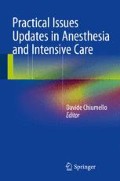Abstract
Spontaneous (non-traumatic) intracranial haemorrhage (SICH) during anticoagulant and antiplatelet therapy is a devastating event and a highly significant cause of morbidity and mortality worldwide; the incidence of SICH has been growing since the early 1990s matching the increasing use of anticoagulant treatment in patients suffering from atrial fibrillation, stroke, pulmonary thromboembolism and deep venous thrombosis. The increment of SICH is even more remarkable in patients aged >80 years together with the increasing age of population. A further risk factor is the introduction of new oral anticoagulants whose utilisation is easier for the patients but exposes them to the same haemorrhagic risk; antagonist drugs are under study and could be available soon.
SICH could be prevented with careful management of anticoagulant therapy. Management of SICH in a neurointensive unit appears to improve outcome; care is based on minimising ongoing bleeding with early reversal of anticoagulation, standardised intensive monitoring and surgical treatment in selected patients.
Access this chapter
Tax calculation will be finalised at checkout
Purchases are for personal use only
References
Flaherty ML et al (2007) The increasing incidence of anticoagulant-associated intracerebral hemorrhage. Neurology 68:116–121
Morgernstern IB et al (2010) American Heart Association Stroke Council and Council on Cardiovascular Nursing: Guidelines for the management of spontaneous intracerebral hemorrhage: a guideline for health care professionals from the American Heart Association/American Stroke Association. Stroke 41:2108–2129
Huhtakangas J et al (2011) Effect of increased warfarin use on warfarin-related cerebral hemorrhage - A longitudinal population-based study. Stroke 42:2431–2435
Van Walraven C et al (2002) Oral anticoagulants vs aspirin in nonvalvular atrial fibrillation: an individual patient metanalysis. JAMA 288:2441–2448
Witt DM et al (2013) Effect of warfarin on intracranial hemorrhage incidence and fatal outcomes. Thromb Res 132:770–775
Schols Angel MR et al (2014) Incidence of oral anticoagulant-associated intracerebral hemorrhage in the Netherlands. Stroke 45:268–270
Morgan T et al (2008) Preliminary report of the clot lysis evaluating accelerated resolution of intraventricular hemorrhage (CLEAR-IVH) clinical trial. Acta Neurochir Suppl 105:217–220
Adams RI, Bird RJ (2009) Coagulation cascade and therapeutics update: relevance to nephrology. Part I: overview on coagulation, thrombophilias and history of anticoagulants. Nephrology (Carlton) 14:462–470
Roberts HR, Monroe DM, Escobar MA (2004) Current concepts of hemostasis: implication tor therapy. Anesthesiology 100:722–730
Ansell J et al; American College of Chest Physician (2008) Pharmacology and management of the vitamin K antagonists: American College of Chest Physicians Evidence-Based Clinical Practice Guidelines (8th Edition). Chest 133(6 suppl):160–988
Kaatz S et al (2012) Guidance on the emergent reversal of oral thrombin and factor X inhibitors. Am J Hematol 87(Suppl 1):S141–S145
Radberg JA, Olsson JE, Radberg CT (1991) Prognostic parameters in spontaneous intracerebral hematomas with special reference to anticoagulant treatment. Stroke 22:571–576
Nilsson OG et al (2000) Incidence of intracerebral and subarachnoid hemorrhage in southern Sweden. J Neurol Neurosurg Psychiatry 69:601–607
Degos V et al (2013) Perioperative management of coagulation in nontraumatic intracerebral hemorrhage. Anesthesiology 119–1:1–10
Kawano-Castillo J et al (2014) Thromboelastography detects possible coagulation disturbance in patients with intracerebral hemorrhage with hematoma enlargement. Stroke 45:683–688
Author information
Authors and Affiliations
Corresponding author
Editor information
Editors and Affiliations
Rights and permissions
Copyright information
© 2015 Springer International Publishing Switzerland
About this chapter
Cite this chapter
Fumagalli, P. (2015). Optimum Management of Perioperative Coagulation in Patients with Spontaneous Intracranial Haemorrhage. In: Chiumello, D. (eds) Practical Issues Updates in Anesthesia and Intensive Care. Springer, Cham. https://doi.org/10.1007/978-3-319-18066-3_8
Download citation
DOI: https://doi.org/10.1007/978-3-319-18066-3_8
Publisher Name: Springer, Cham
Print ISBN: 978-3-319-18065-6
Online ISBN: 978-3-319-18066-3
eBook Packages: MedicineMedicine (R0)

